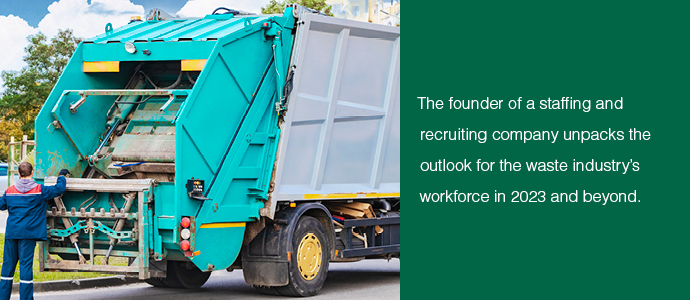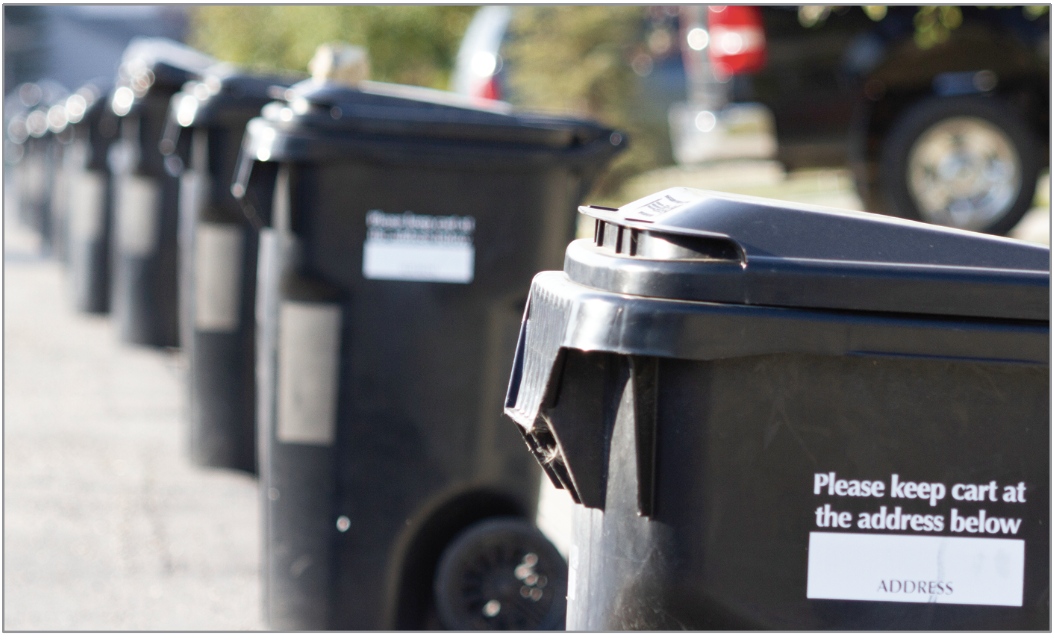 This article appeared in the July 2023 issue of Resource Recycling. Subscribe today for access to all print content.
This article appeared in the July 2023 issue of Resource Recycling. Subscribe today for access to all print content.
We’re well into 2023, and although many economic indicators have shown resilience, we’re certainly not out of the woods yet when it comes to the global recession.
The waste industry has faced an interesting mix of headwinds and tailwinds in this regard, with an estimated 480,500 people employed in the sector as of the end of 2022 – a 3.85% increase year over year.
Quantitatively, this is a positive trend that points to a growing industry, but if you dig a little deeper, there are several widespread concerns about the quality of those jobs and their sustainability in light of other developing labor options.
Challenges facing the waste and recycling labor force
Three key challenges face the workforce in the waste industry, each of which is intertwined with one another – and all of which need to be addressed if the industry is to reach its potential this year.
First, despite inflationary pressure lifting wages in most sectors, the waste industry still lags in terms of wage growth, meaning that it’s difficult to attract personnel, especially when you consider what other options are out there. Without an adequate level of remuneration, it is very difficult to retain top talent who have many other options to choose from.
Another key aspect of the current labor market is that jobs are somewhat insecure and unstable. Waste and remediation projects can be short term in nature, and there is often significant employee churn as companies flex their labor forces up and down to meet demand.
This uncertainty will again harm the loyalty and satisfaction of workers who are not in control of their hours and job responsibilities.
Building on the above, the third key problem faced by the industry is poor conditions in the workplace. Working in waste is, by nature, a challenging proposition, but that does not mean that companies shouldn’t try to make working conditions as positive as possible. This includes company culture, work-life balance, health and safety, employee wellness and much more. Workers want to know that their employers care about them and when work conditions are poor, it throws that into question.
These challenges are serious, but they are solvable if the companies in the industry think differently about their hiring and general human resource relations – to change the paradigm and create a pleasant working experience across the board.
How should the industry address these challenges?
The proposed solutions for these challenges should not be surprising, but they are nonetheless key pillars that can make a big difference and create real change for individual companies and the industry as a whole.
First, whether companies like it or not, they are going to have to pay more for talent in the current labor market. A thorough compensation analysis should be conducted on a quarterly basis. Wages simply must be increased if the waste industry is going to be competitive for new entrants and retain the staff that are already in place. The inflationary pressures we’ve seen in the past few months necessitate a correction, and those companies that recognize this will be in a prime position to hire the next generation of talent into their organizations.
Another way to improve hiring and retention is to guarantee better job security for people who are entering the industry. Companies should be looking for ways to create truly full-time, long-term positions that can adapt and adjust to changing business circumstances without too much churn, which results in constantly having to rehire employees. The more you can ensure job security, the more candidates you’ll have to choose from when staffing your waste and remediation company.
Finally, companies should focus on improving the overall working conditions that employees are placed in on a day-to-day basis. Strategically, it makes a lot of sense to be proactive about this and go above and beyond what is expected to create an environment that fosters productivity, wellness and enjoyment among the entire workforce. Small touches that show employees they are cared for go a long way toward keeping them invested in the company’s mission.
These three components can be incredibly powerful if delivered in parallel. The investment required to make these changes happen might be significant, but it can be transformational if done right.
Where to from here?
The future of the waste and recycling labor force lies in the hands of the established companies that hold the keys to the kingdom. If the positive trends that we’ve been seeing are to continue, growth must be fed by higher wages, better job security and improved working conditions.
Companies that take these concepts seriously and build them into their strategic plans for 2023 and beyond will reap the rewards of these proactive moves and place themselves in the best possible position to attract and retain those key personnel to move their company forward.
Mark Mutton is the founder and CEO of recruiting and staffing company Inflection Poynt. He can be reached at inflectionpoynt.com/contact-us.
This article appeared in the July 2023 issue of Resource Recycling. Subscribe today for access to all print content.

